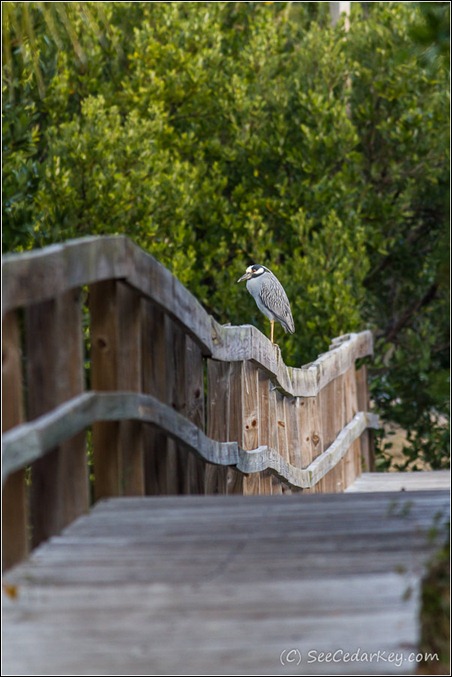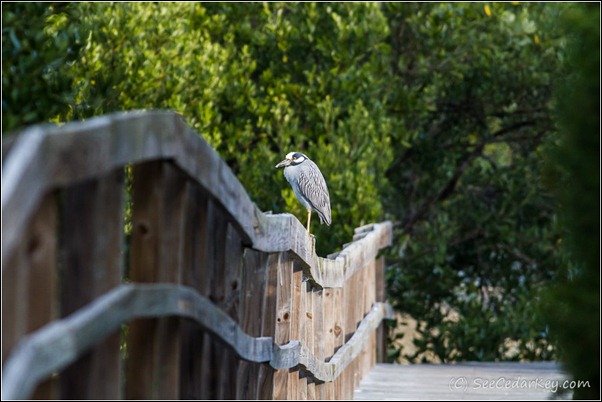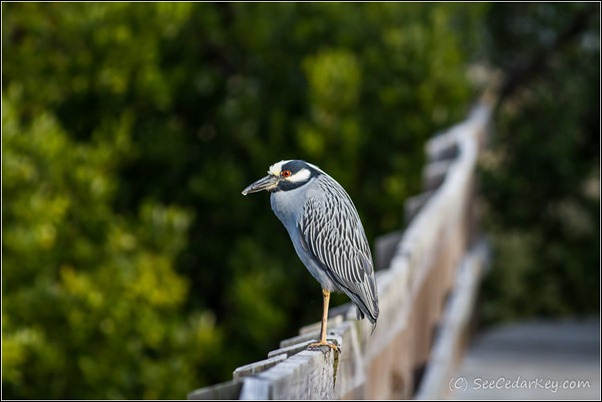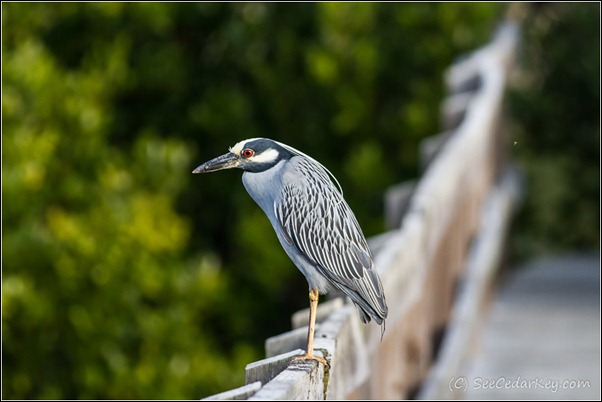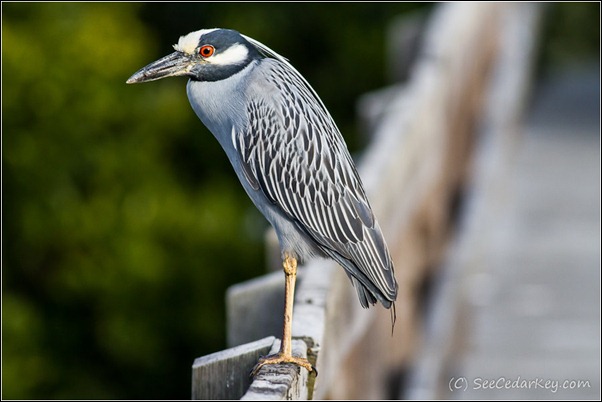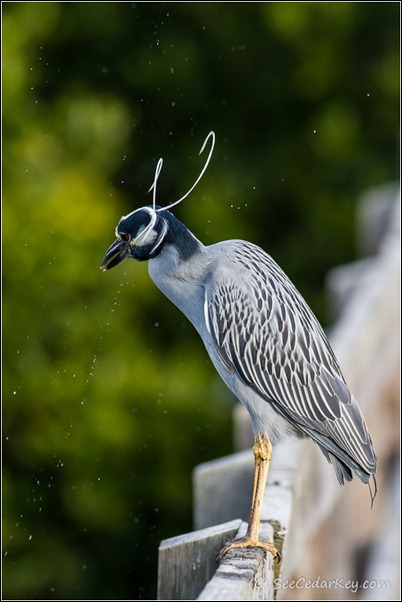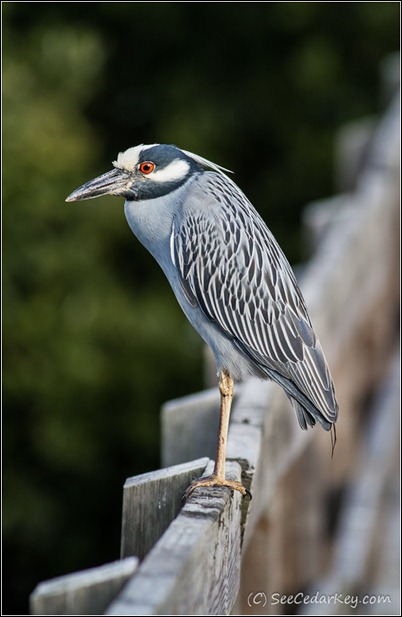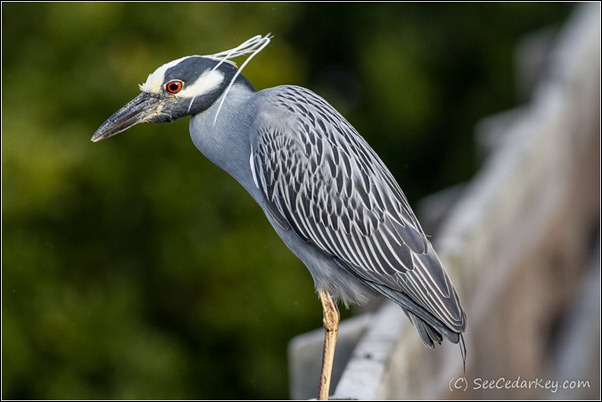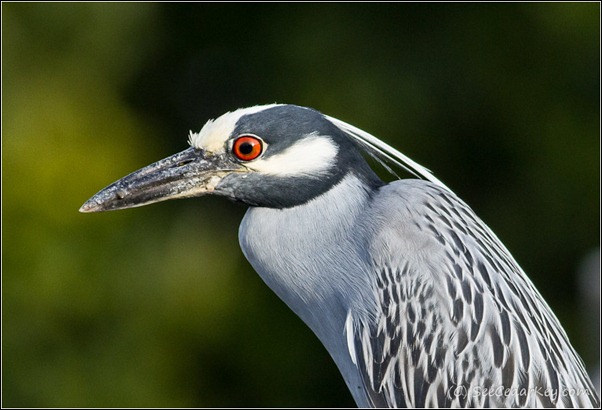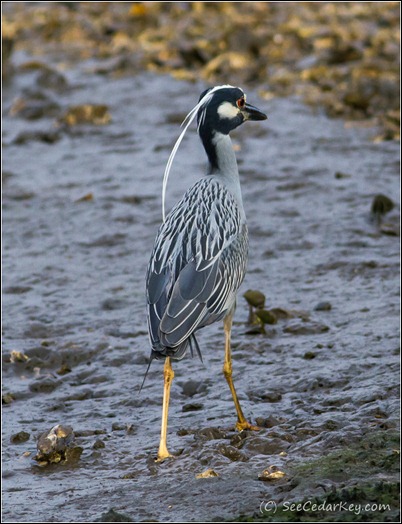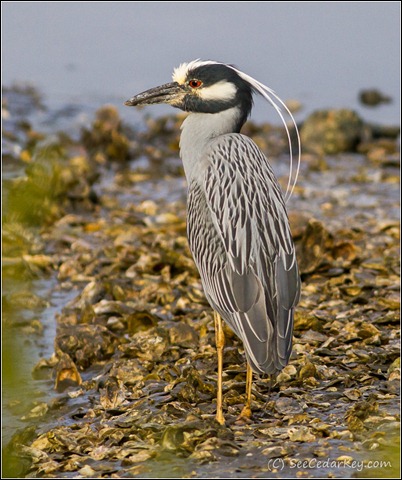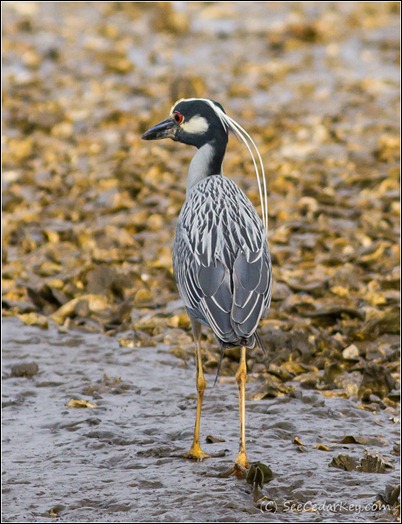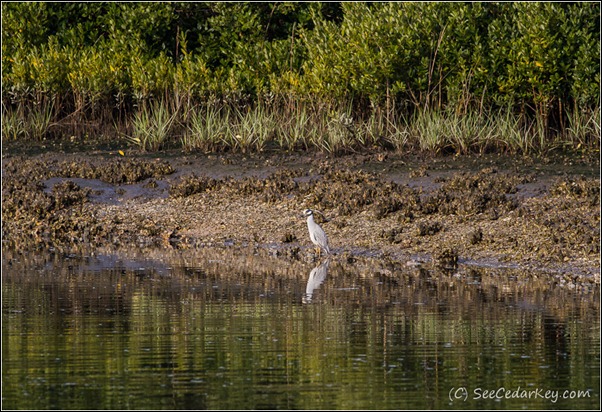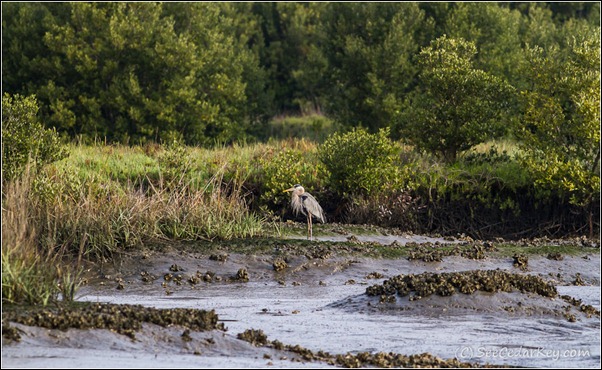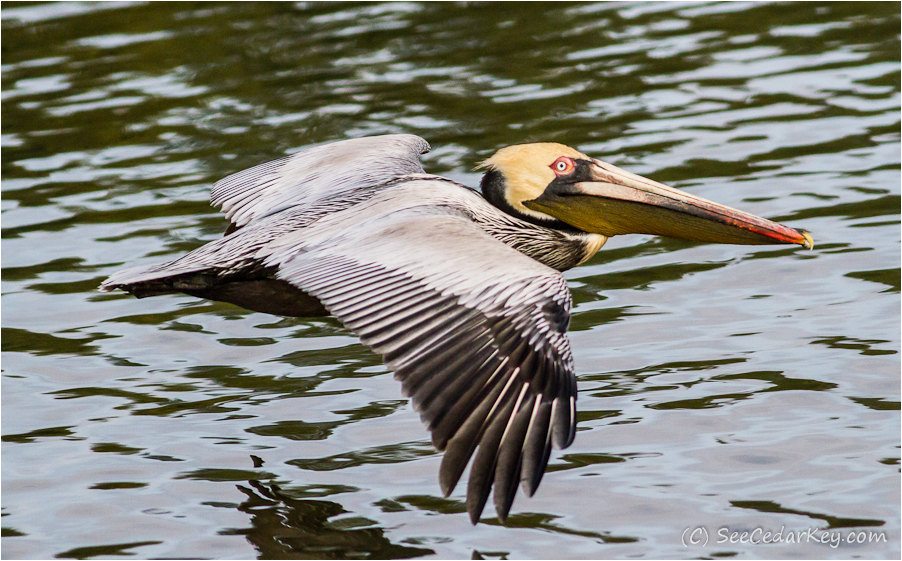This morning I took my Canon 7D camera with an EF400mm F5.6 lens attached, along with two of my grandchildren, to one of my favorite spots for finding the larger shorebirds of Cedar Key.
As we approached the boardwalk I noticed what I thought was a Great Blue Heron sitting on the handrail. Since I had spotted one at this exact same place just a few days earlier, I was pretty sure that’s what it was.
To my surprise, after taking the first shot of it from a distance, I discovered it was a Yellow-crowned Night-Heron. (I had earlier mistakenly identified this bird as a Black-crowned Night Heron)
Since I have been trying to get shots of this bird in daylight for quite a while, this was quite a treat for me. What made it extra nice was that the bird was perfectly lit. As you can see in the above image, the area to the left of the bird is in shade, while the bird is in ideal lighting.
To give you a feeling of what is was like capturing this bird, in each of the following shots I had moved roughly 10-20 feet closer each time. Also, each of the images is a full frame shot, meaning that I did not crop the images.
In the following shot, I changed to a vertical frame. The bird was shaking his head.
Still full-frame shots! In the following shot you can better see the white plumes on the bird’s head. Now the bird fills so much of the frame I had to eliminate it’s feet to avoid crowding it’s head in this horizontal format image..
The following image is a close-up crop.
By now I’m within about 30-40 feet of the bird… At this point the bird decided to hop down from the handrail onto the seabed.
A second Yellow-crowned Night Heron across the channel.
A few tidbits about this bird…
- A nocturnal heron of the southern swamps and coasts, the Yellow-crowned Night-Heron can also be found breeding along wooded streams northward to Indiana and Illinois.
- Yellow-crowned Night-Heron’s diet consists of crustaceans. They eat many kinds of crabs, including blue, ghost, and fiddler crabs, as well as crayfish.
- They usually nest in small colonies, sometimes with other wadiing birds, and forage along tidal marshes, in tide pools and the shores of water bodies where crustaceans are abundant.
And, on this mini birding trip, a Great Blue Heron across the channel…
The above shots shows the channel bed during low tide. Notice the oyster reefs that are submerged during high tide.
And of course, a Brown Pelican fly-by. You can’t go anywhere on the island without seeing Brown Pelicans…
Click any image for a larger view.

